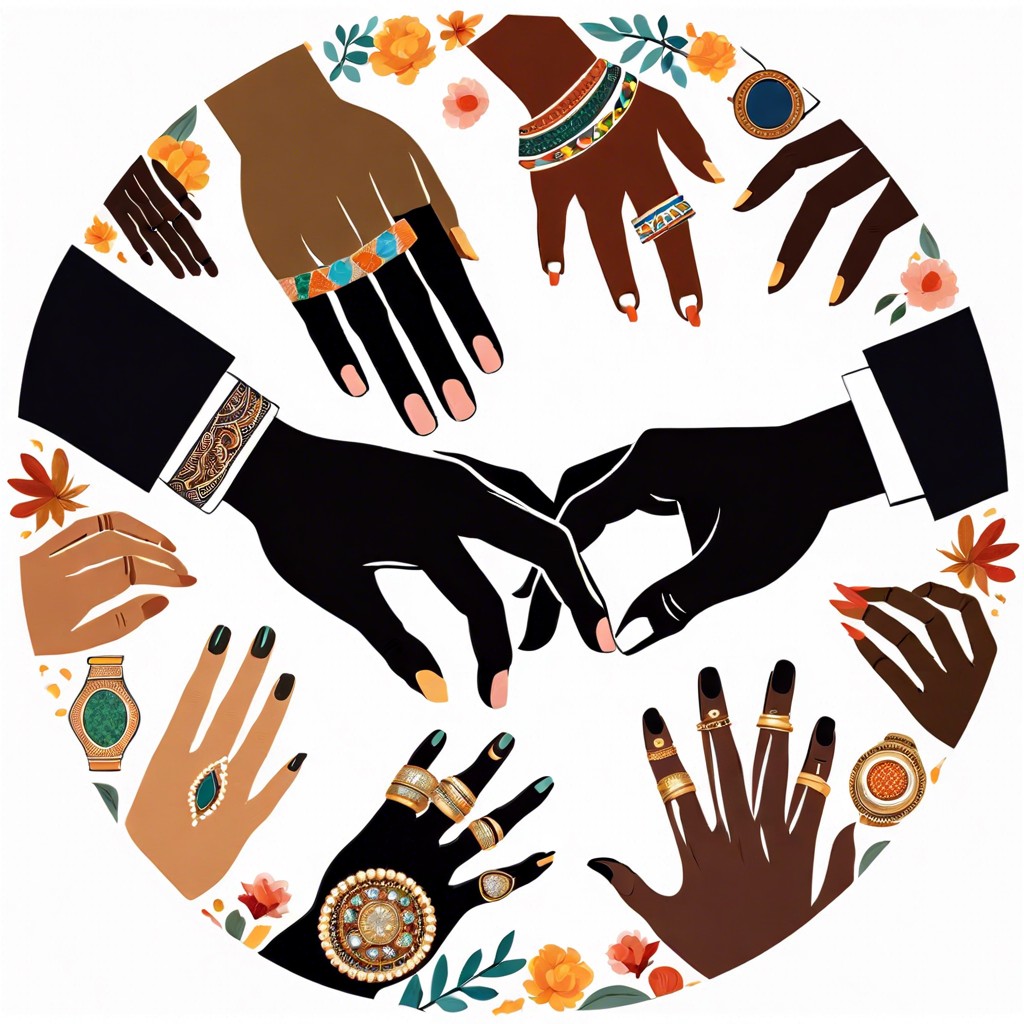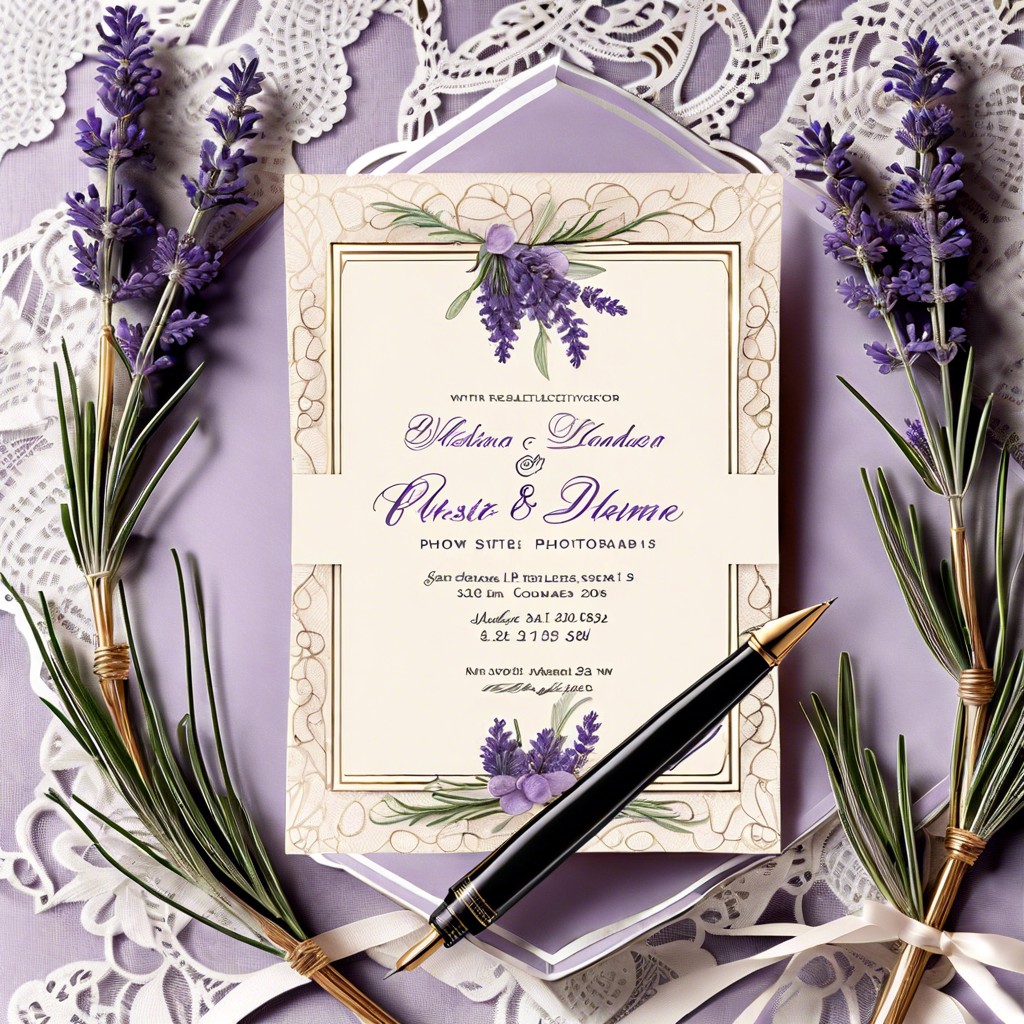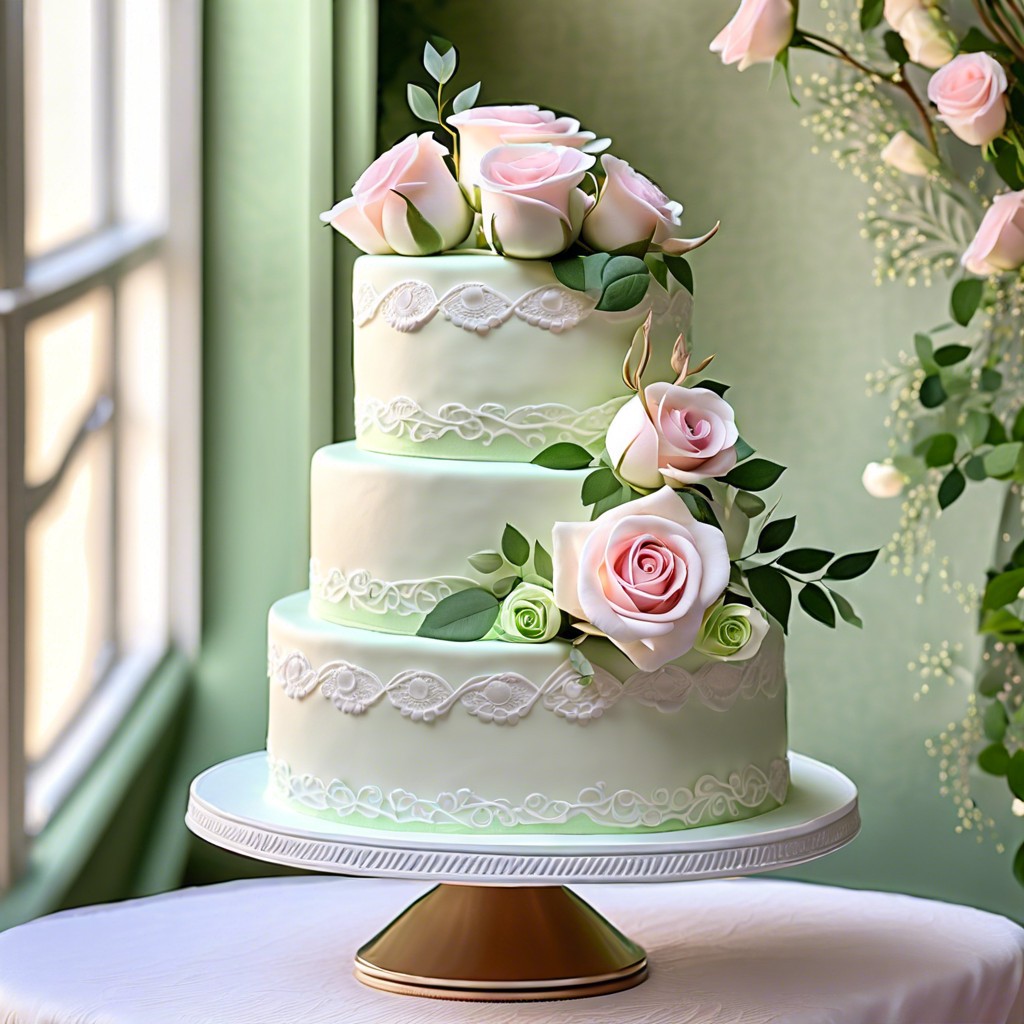Discover in this article the traditional and cultural practices that dictate which hand the wedding ring is worn on.
Key takeaways:
- Wedding ring traditionally goes on left hand’s ring finger.
- Some cultures place wedding rings on right hand.
- Jewish couples start on right hand, move to left.
- Personal preference and comfort can influence ring placement.
- Engagement ring is different from wedding ring, worn on left hand.
Which Is the Wedding Ring Finger?

Traditionally, the fourth finger on the left hand, known as the “ring finger,” is designated for wedding bands. This custom stems from the ancient belief that a vein, the Vena Amoris, ran directly from this finger to the heart, symbolizing love and fidelity.
Although the anatomical concept of the Vena Amoris has been debunked, the tradition persists in many Western cultures. However, it’s essential to note that some countries, like Russia, India, and Norway, often place wedding rings on the right hand.
This practice also varies across different cultures and religions; for instance, Jewish couples typically wear the wedding ring on the right hand during the ceremony but may switch it to the left after the wedding.
Ultimately, the choice of which finger to wear a wedding ring on is a personal decision and may be influenced by cultural background, personal preference, or profession, especially if wearing a ring on the left hand is impractical or uncomfortable.
Cultural Differences in Ring Wearing Traditions
Understanding the diversity of ring-wearing customs across various cultures can add a rich and meaningful dimension to your wedding.
Western Tradition: In many Western countries, the wedding ring is traditionally worn on the left-hand ring finger. This custom is rooted in the ancient Roman belief that the vein in this finger, the “vena amoris,” is directly connected to the heart.
Eastern Influence: In contrast, people in some Eastern European nations, such as Russia, Germany, Norway, and India, often wear the wedding band on the right-hand ring finger, reflective of their cultural practices and religious beliefs.
Variations Across Cultures: In Jewish ceremonies, the wedding ring is initially placed on the index finger of the right hand but often moved to the left hand after the ceremony. Spanish and Latin American cultures typically also favor the right hand for wedding bands.
Modern Preferences: It’s important to note that contemporary couples may choose hand and finger based on comfort, profession, or personal significance rather than sticking to tradition.
Remember that while these traditions are deeply rooted in cultural practices, what’s most important is the commitment the rings symbolize, regardless of which hand wears them.
The Wedding Ring Vs. The Engagement Ring: Understanding the Difference
The engagement ring and wedding ring serve different purposes and are typically designed differently. An engagement ring symbolizes a proposal and is given at the time of engagement. Often featuring a diamond or other gemstone, it’s usually more ornate and worn on the left ring finger.
On the other hand, a wedding ring is exchanged during the wedding ceremony and represents the official bond of marriage. It tends to be simpler and is often a plain metal band that complements the engagement ring. After the ceremony, some choose to wear both rings together on the same finger, with the wedding band placed first, closer to the heart.
Wearing the Rings: Before and After the Wedding Ceremony
Before the wedding ceremony, the engagement ring typically occupies the fourth finger of the left hand, known as the ring finger, symbolizing the commitment to the forthcoming marriage. During the ceremony, the engagement ring can be shifted to the right hand to make room for the wedding band, or it can be placed on top of the wedding band if kept on the left hand.
After the exchange of vows, the wedding ring is placed on the ring finger, nearest to the heart, to signify married love and the unbroken bond of marriage. The engagement ring then can be moved back to the left hand, and is often positioned above the wedding band to keep it secure and to display the continuity from engagement to marriage.
Post-ceremony, it’s common for spouses to wear both the wedding band and engagement ring on the same finger. Some individuals may choose to solder the two rings together, while others prefer to wear them separately or only don one ring for certain activities or occasions, depending on personal preference, comfort, and lifestyle.
How Can I Get My Girlfriend’s Ring Size?
Securing the correct ring size for your girlfriend without her knowledge adds an element of surprise to a proposal. Consider these discrete methods:
- Borrow one of her rings from her jewelry box, ensuring it’s one she wears on a similar-sized finger, and take it to a jeweler to be sized.
- Enlist the help of a friend or relative, who can casually inquire about her ring size or take her ring shopping “for fun.”
- For a more direct approach, propose a fun at-home craft or activity that involves measuring each other’s fingers, disguising the true intention.
- Some jewelers offer ring sizers or printable size guides, which can be utilized if you can find a moment to measure her finger stealthily.
- If all else fails, select a ring that can easily be resized after the proposal to ensure the perfect fit.
FAQ
Is the wedding ring on the right or left hand?
The wedding ring is worn on the left hand.
Which hand does a engagement ring go on?
The engagement ring is typically worn on the fourth finger of the left hand in most western cultures.
Why would someone wear their wedding ring on the right hand?
People may wear their wedding ring on the right hand due to certain cultural traditions or religious beliefs, such as those passed down from the Romans or practices in the Orthodox Christian Church.
Which hand does a promise ring go on?
A promise ring is traditionally worn on the ring finger of the left hand if you are not married.
What is the cultural significance behind choosing the right or left hand for the wedding ring?
The cultural significance behind choosing the right or left hand for a wedding ring varies greatly across different cultures, with some, like the Western tradition, opting for the left hand due to the belief of the "vena amoris" or vein of love, while others, including Eastern European and Orthodox Christian traditions, prefer the right hand as it is associated with the oath of marriage.
Does the hand for the wedding ring differ between men and women?
The hand for the wedding ring does not differ between men and women, both typically wear it on the left hand's ring finger in western cultures.
Are there different traditions across the world regarding which hand the wedding ring goes on?
Yes, different cultures around the world have varying traditions on which hand the wedding ring is worn; such as in Western cultures it's typically the left hand, while in some Eastern European and South American cultures it's often the right hand.



